We begin sawing the larger diameter logs and remove a load from the dry kilns.
|
The first of the larger logs unloaded yesterday has been bucked to length and the
end has been sawn away. John is now moving the log over to the saw mill.
|
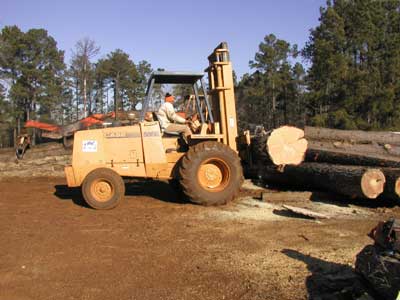
|
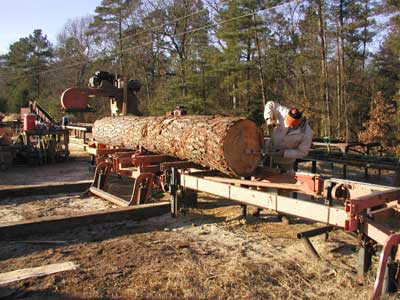
|
The log has been loaded onto the saw bed and John is checking the measurements to
ensure that it is correctly centered. This will be the first cut of the larger timbers
and everything has to be right the first time.
|
|
Sawing is going smoothly even as the temperature has just risen slightly above freezing
for the first time today. It should take John and his crew about 45 minutes to complete
this timber.
|
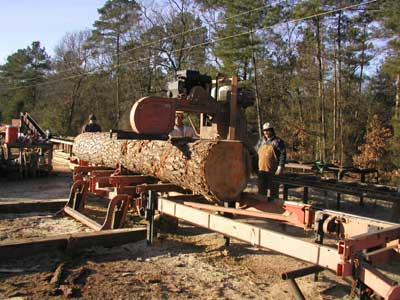
|
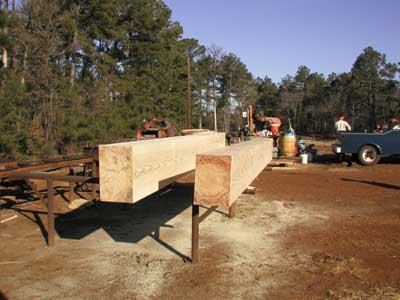
|
Both of the larger logs received yesterday have been turned into timbers for the
chapel. The next step is the dry kilns. Because of their size, these timbers will
require additional drying time to reach the 20% moisture content goal.
|
|
John and his crew can be seen here unloading chapel timbers from one of the dry
kilns. Remember that each timber is cut for a specific location in the chapel frame.
That's why you see timbers of varying sizes in this particular load.
|
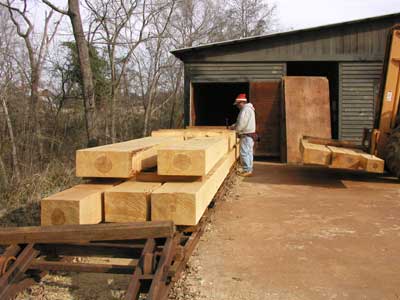
|
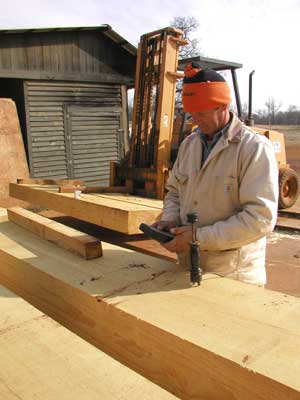
|
John checks all of the timbers to determine their moisture content. The device he
uses is an electronic moisture meter that senses the internal moisture still present
in the timbers. The instrument passes an electrical charge through the timber and
measures the internal resistance of the wood. We tell the instrument the wood species
and the temperature of the wood when it comes from the kiln. It uses this information
to compute the internal moisture content of the timber.
|
|
In this close-up view you can see how the tangs of the moisture sensor are driven
into the wood and the cable that runs to the hand held read-out. This timber presents
an 18% moisture content which is well within specifications.
|
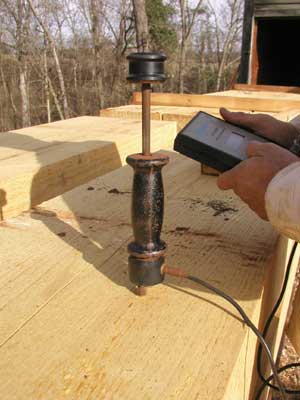
|
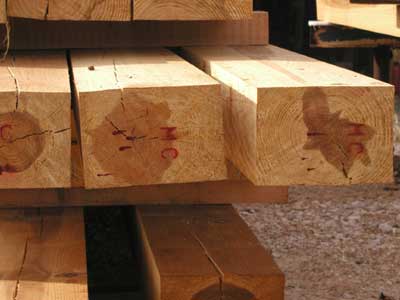
|
This is a close-up shot of the ends of the timbers as they came out of the dry kilns.
You should notice that the timber ends are marked MC for Missouri City. When the
crew begins work on these timbers, they will mark them with a tracking number to
denote which part of the frame is to receive a specific timber.
The slight cracks you see at the timber ends are called "checks" and are
a natural part of the drying process. Checking occurs throughout the timber but
is most noticeable at the ends. Checks do not compromise the integrity or strength
of the timber.
|
|
All of the timbers have been removed from the dry kilns and stacked on skids in
the yard. From here, the timbers will go to the timber sizer to receive the initial
planing that will square them and produce the first dimensional cut.
|
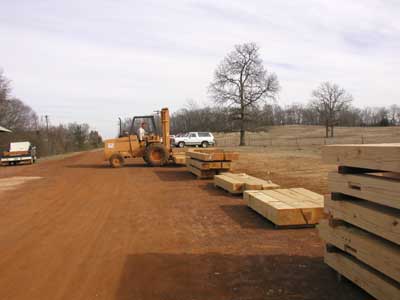
|
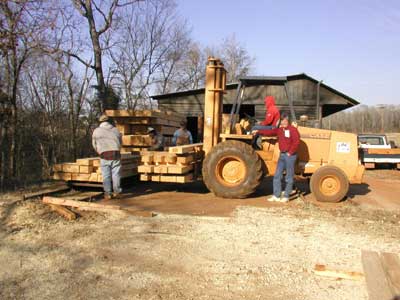
|
The next load of timbers for the chapel are being loaded into the kilns and we will
continue to produce more timbers for the chapel in the following days.
Shop work will begin the week of 01-14-02. At that time, the crew will begin planing
the timbers and start the "layout" process.
|